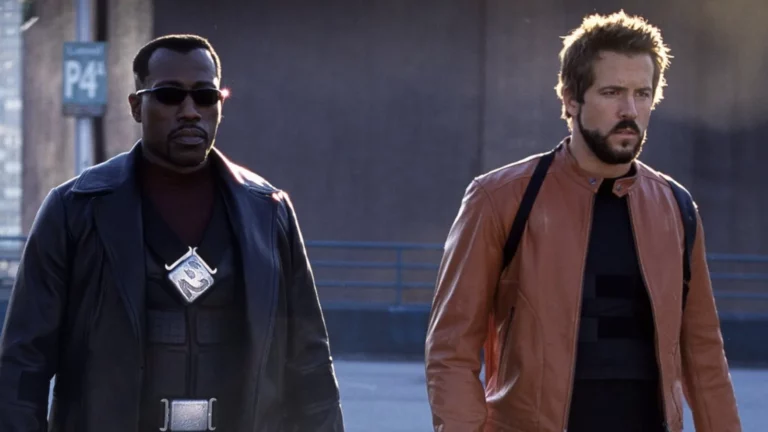Marvel’s “Blade: Trinity” is remembered not just for its high-octane action and supernatural storytelling but also for its troubled production. The third installment in the Blade series became infamous, overshadowed by the off-screen drama involving its stars, Wesley Snipes and Ryan Reynolds. This behind-the-scenes turmoil provides a gripping tale of clashing egos and method acting gone awry, offering a fascinating glimpse into the less glamorous side of filmmaking.

The Struggle Behind the Scenes
From the start, Wesley Snipes, reprising his role as the titular Blade, brought an intense method acting approach to the set. His commitment to staying in character led to unconventional behavior, including refusing to leave his trailer and communicating solely through Post-it notes signed as “Blade.” This eccentric method of interaction was just the tip of the iceberg in what became a chaotic filming environment.
Ryan Reynolds: The Unexpected Focal Point of Discontent
While Wesley Snipes’ standoffish behavior was challenging, it was his interactions with co-star Ryan Reynolds that truly highlighted the tension on set. Reynolds, who played vampire hunter Hannibal King, found himself at odds with Snipes. In an anecdote shared by Reynolds in an interview with IGN, he described a candid moment on set that inadvertently made it into the film: looking up at co-star Jessica Biel, he remarked, “He hates me, doesn’t he?” to which she confirmed, “Yeah.” This offhand comment underscored the real-life tension between the actors.
Moreover, Snipes allegedly referred to Reynolds derogatorily as “the cracker,” adding a layer of personal animosity to their professional disagreements. The friction between the two was palpable and emblematic of the overall strained atmosphere during the production.

Patton Oswalt’s Comedic Relief and Insight
Amidst the tension, Patton Oswalt, who had a smaller role in the film, brought a lighter perspective to the fraught environment, albeit with a comedic twist. Appearing on The Pete Holmes Show, Oswalt recounted tales from the set, highlighting the absurdity of the situation. His stories, including the overwhelming smell of marijuana emanating from Snipes’ trailer and the actor’s insistence on being addressed only as Blade, painted a surreal picture of the filming process.
Oswalt’s humorous recollections serve as a bizarre testament to the film’s chaotic creation. Despite the disarray, he admires the film’s completion under such tumultuous conditions, comparing its mere existence to a cinematic miracle.
Reflections on Method Acting and Its Impact
The production of “Blade: Trinity” brings to the forefront the discussion on method acting and its impact on film sets. Wesley Snipes’ extreme approach, while perhaps intended to enhance his performance, contributed significantly to the tensions and operational challenges during filming. This situation reflects a broader conversation in the entertainment industry about the fine line between artistic dedication and disruptive behavior.

A Legacy of Lessons
“Blade: Trinity” may not have met the expectations set by its predecessors, and its production may have been marred by discord, but the stories that emerged from its making are as compelling as any action sequence in the film. For those involved, from the director to the stars, the experience was undoubtedly challenging, yet it also offered valuable lessons on the complexities of collaborative creative endeavors in Hollywood. As the film industry continues to evolve, the tale of “Blade: Trinity” remains a poignant reminder of the delicate balance required to meld strong artistic personalities into a cohesive and functional filmmaking team.
